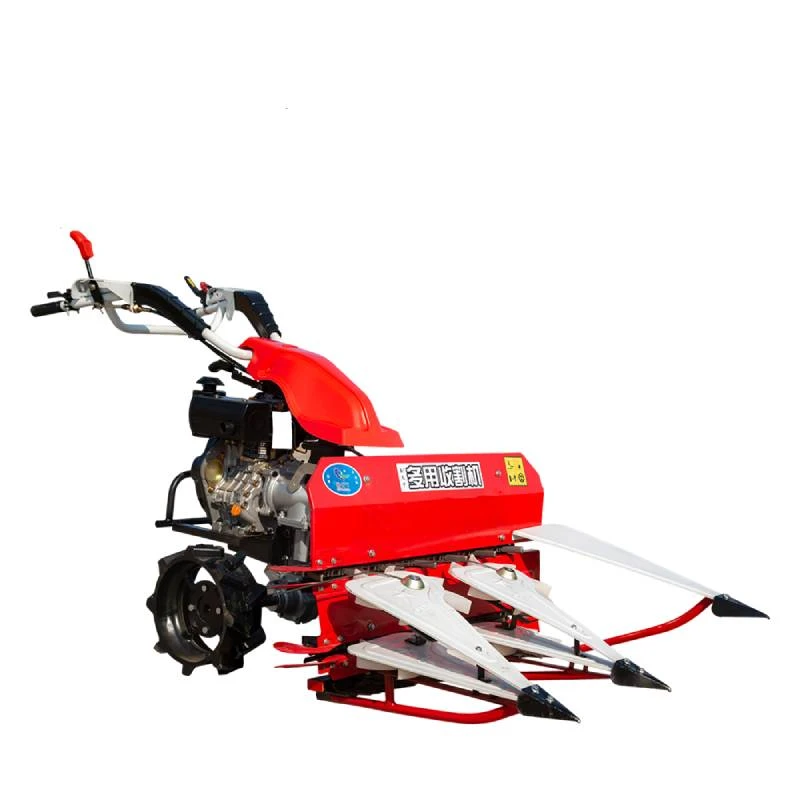paddy reaper harvester
The Evolution and Importance of the Paddy Reaper Harvester
The paddy reaper harvester is a revolutionary machine that has significantly transformed rice cultivation, enabling farmers to harvest their crops more efficiently and with less labor. In many parts of the world, particularly in Asia, rice is a staple food, and as such, increasing production efficiency has been crucial for feeding growing populations. This article discusses the evolution, benefits, and challenges associated with paddy reaper harvesters.
Historically, rice harvesting was a labor-intensive process, involving numerous workers who manually cut the stalks with sickles. This method, while traditional, was slow and required substantial physical effort, often leading to back injuries and other physical ailments among laborers. As the demand for rice surged over the decades, especially in populous countries like China and India, the need for mechanization became evident. This led to the development of the paddy reaper harvester.
The first paddy harvesters emerged in the mid-20th century. These machines were initially simple mechanical devices that could cut the stalks and bundle them for easier handling. Over time, technological advancements enabled manufacturers to produce more sophisticated models equipped with advanced features such as threshing capabilities—separating the grain from the chaff— and even GPS technology for precision farming. Modern paddy reapers have become multifunctional, streamlining various harvesting processes and allowing farmers to focus on other critical areas of production.
One of the most significant advantages of paddy reaper harvesters is the increase in efficiency. A single machine can harvest several acres of rice within a day, a feat that would take numerous workers much longer to accomplish. This efficiency not only saves time but also reduces labor costs. Farmers can now reallocate their workforce to other vital tasks, such as planting or maintaining equipment, which leads to overall improved productivity on the farm. Additionally, the mechanization of harvesting helps minimize crop losses due to adverse weather conditions, as machines can operate faster and under various conditions compared to human laborers.
paddy reaper harvester

Furthermore, the use of harvester technology promotes sustainability. By reducing labor dependence, farmers can address labor shortages that are persistent in rural areas. Additionally, modern harvesters can be precisely calibrated to minimize soil disturbance, conserve water resources, and reduce the need for chemical inputs, making rice farming more environmentally friendly. This alignment with sustainable practices is crucial as the agricultural sector faces increasing scrutiny over its environmental impact.
However, the adoption of paddy reaper harvesters is not without its challenges. The initial cost of purchasing these machines can be prohibitive, particularly for small-scale farmers in developing countries. While the long-term savings and efficiency gains can outweigh the upfront investment, access to financing options remains limited in many regions. Furthermore, there is a learning curve associated with operating and maintaining modern machinery, necessitating additional training for farmers.
Moreover, the widespread adoption of mechanized harvesting can lead to socio-economic disparities in rural communities. Wealthier farmers may purchase advanced harvesters while smaller farmers may remain reliant on manual labor, exacerbating inequalities within agricultural production systems. There is a pressing need for policies and programs that support equitable access to technology for all farmers, ensuring that benefits are distributed more evenly across communities.
In conclusion, the paddy reaper harvester has played a pivotal role in revolutionizing rice farming, enhancing efficiency, reducing labor costs, and promoting sustainable agricultural practices. Despite challenges related to cost and access, the benefits of mechanization cannot be overlooked. As technological advancements continue, the future of paddy harvesting looks promising, with ongoing potential to improve food security and agricultural sustainability worldwide. It is imperative that stakeholders collaborate to address the challenges of adoption, ensuring that all farmers can benefit equitably from this transformative technology.
Latest news
-
When to Upgrade Your Old Forage HarvesterNewsJun.05,2025
-
One Forage Harvester for All Your NeedsNewsJun.05,2025
-
Mastering the Grass Reaper MachineNewsJun.05,2025
-
How Small Farms Make Full Use of Wheat ReaperNewsJun.05,2025
-
Harvesting Wheat the Easy Way: Use a Mini Tractor ReaperNewsJun.05,2025
-
Growing Demand for the Mini Tractor Reaper in AsiaNewsJun.05,2025







